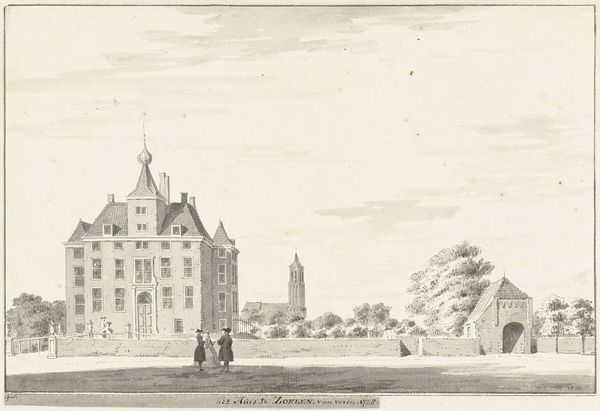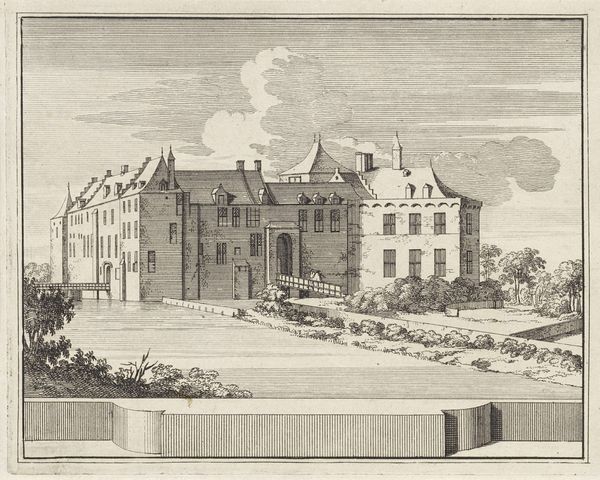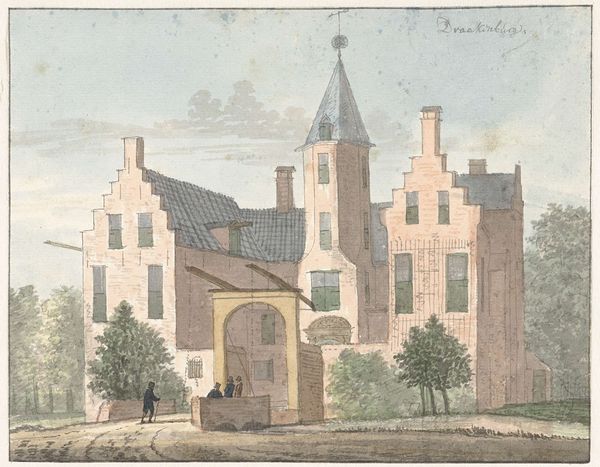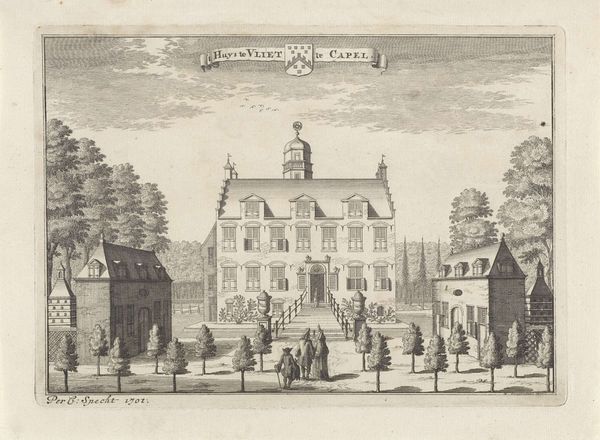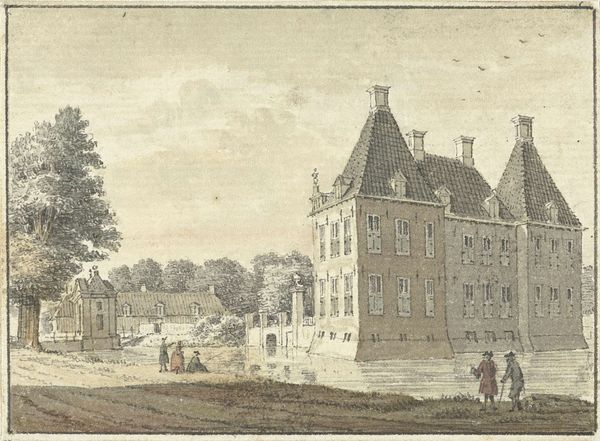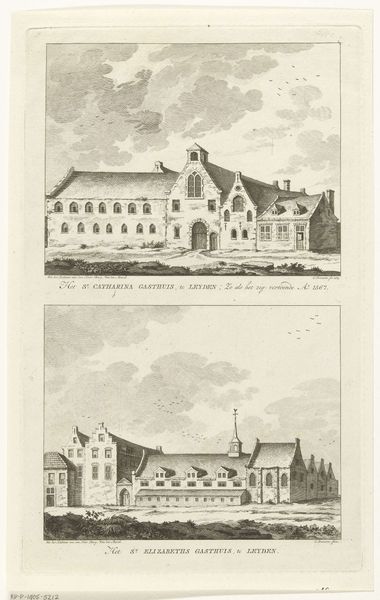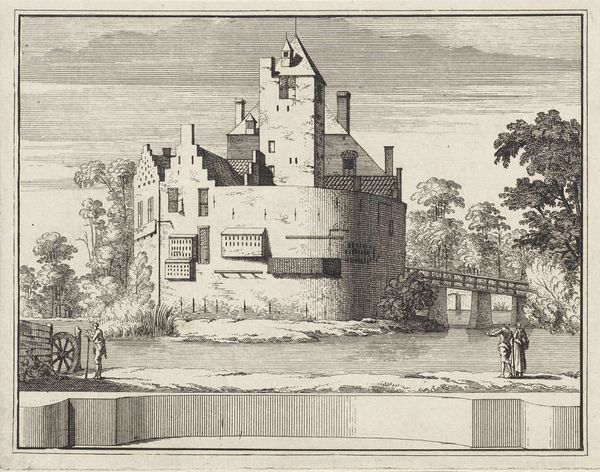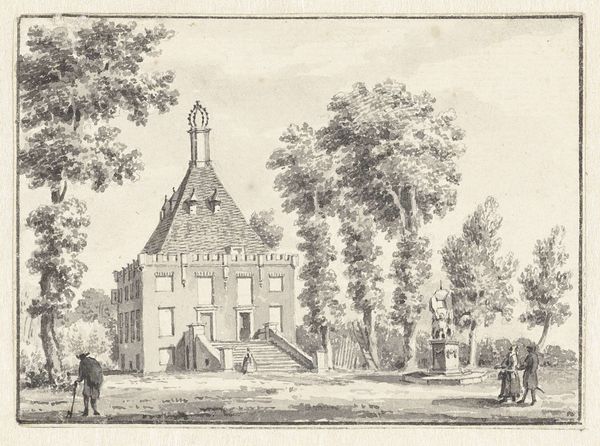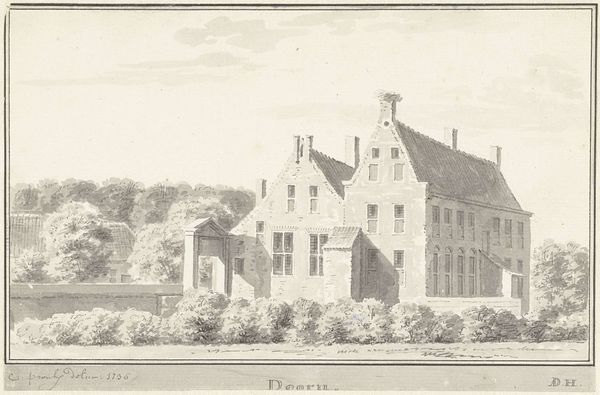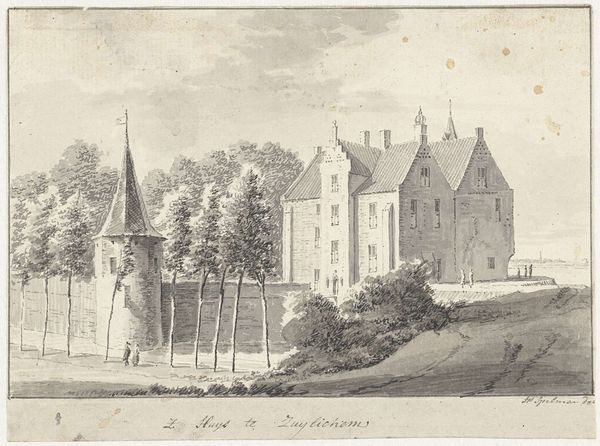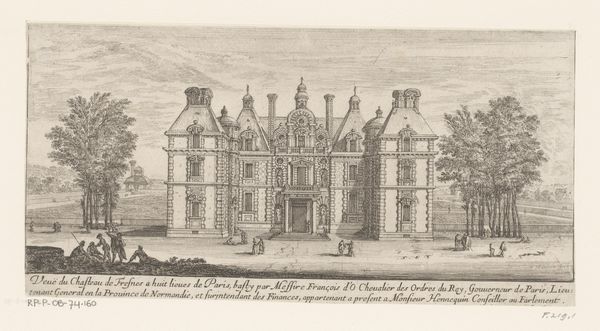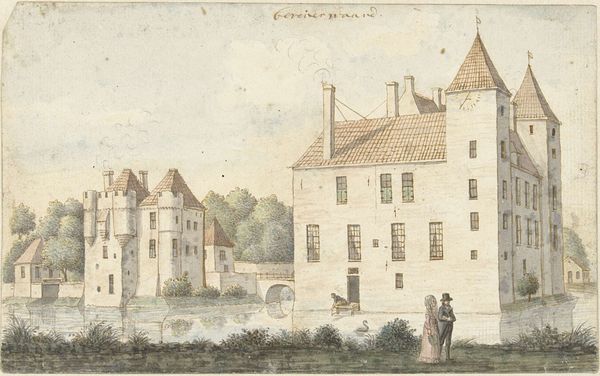
drawing, paper, ink
#
drawing
#
dutch-golden-age
#
landscape
#
paper
#
ink
#
cityscape
Dimensions: height 152 mm, width 240 mm
Copyright: Rijks Museum: Open Domain
Curator: This is a drawing titled "Het huis Groenewoude," created between 1685 and 1735, attributed to Abraham Rademaker. It is currently held here at the Rijksmuseum. The medium used appears to be ink on paper. Editor: It's remarkable how delicate yet precise the lines are. It has a sort of dreamlike quality, doesn't it? Ethereal almost. I feel transported to a quieter, slower time. Curator: Absolutely. Rademaker’s landscapes and cityscapes often depicted idealized versions of Dutch life, reflecting the societal values of order and prosperity. How do you see this intersecting with power dynamics of the era? Editor: I think there's something to be said about the artist's choice to feature such an opulent building. It becomes almost symbolic of the ruling class's wealth, contrasted against a landscape carefully curated, not really representative of lived realities. And of course, absence matters; who is left out? Who is it really for? Curator: Precisely! The building itself is prominently displayed and looks to have been built or renovated recently and with purpose. Rademaker’s depictions often catered to a growing middle class eager to envision themselves within this landscape. He may have also been drawing this artwork on commission by the family living there. What do you think of how these kinds of buildings influenced landscape? Editor: They certainly played into constructing certain class aesthetics. Wealthy patrons could mold nature to match certain prescribed standards. Art becomes complicit. Curator: And so the work becomes an important marker, showing evolving values, the power of artistic interpretation in solidifying class and hierarchy. Editor: Indeed. It pushes me to look at today's cityscapes. We have similar echoes of power made architectural. Curator: I think that’s a crucial parallel, reflecting how these historical images can illuminate modern socio-political constructions. It’s more than just art; it’s a lens. Editor: I’m certainly leaving with new questions. Thanks for this deep dive.
Comments
No comments
Be the first to comment and join the conversation on the ultimate creative platform.
